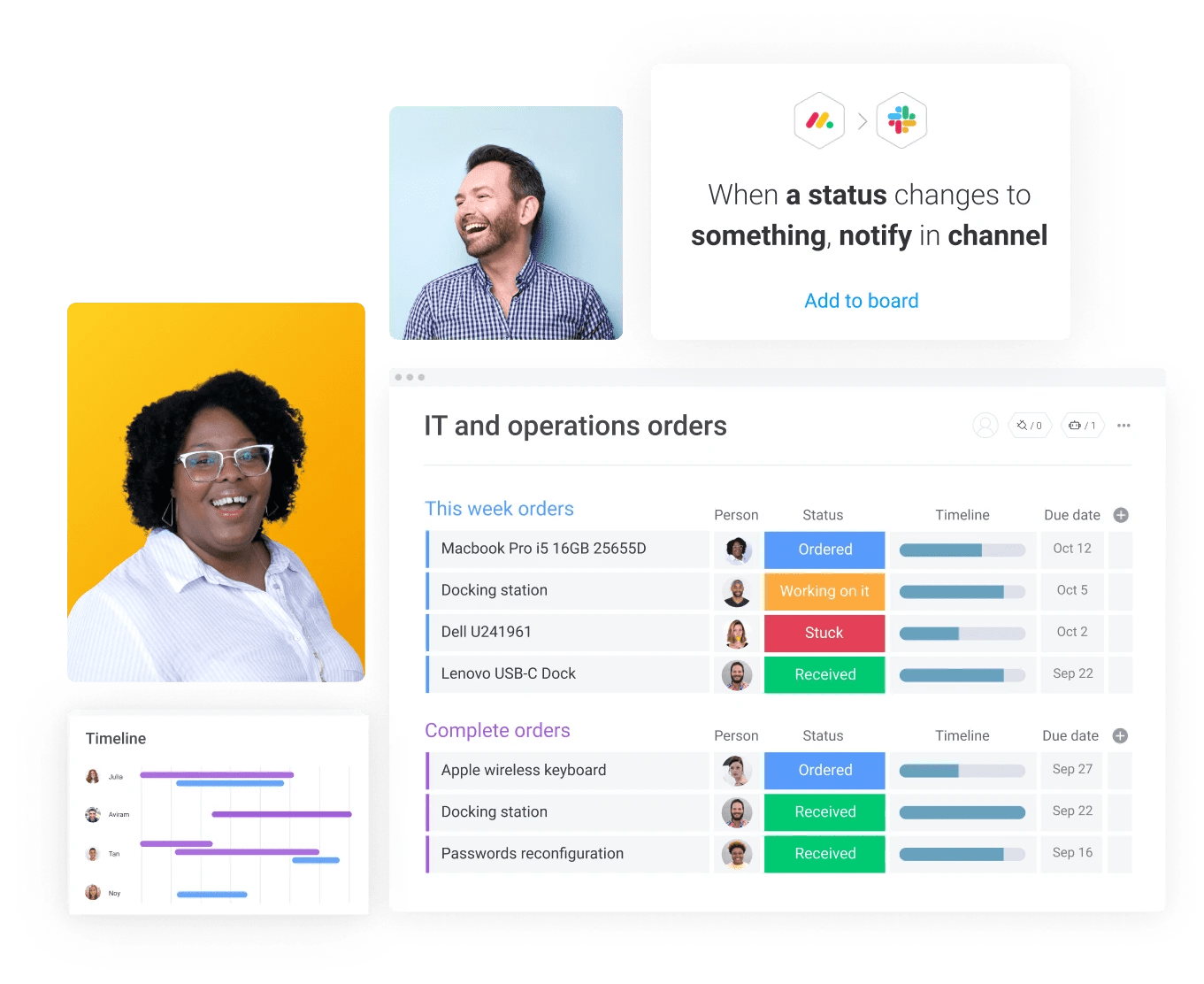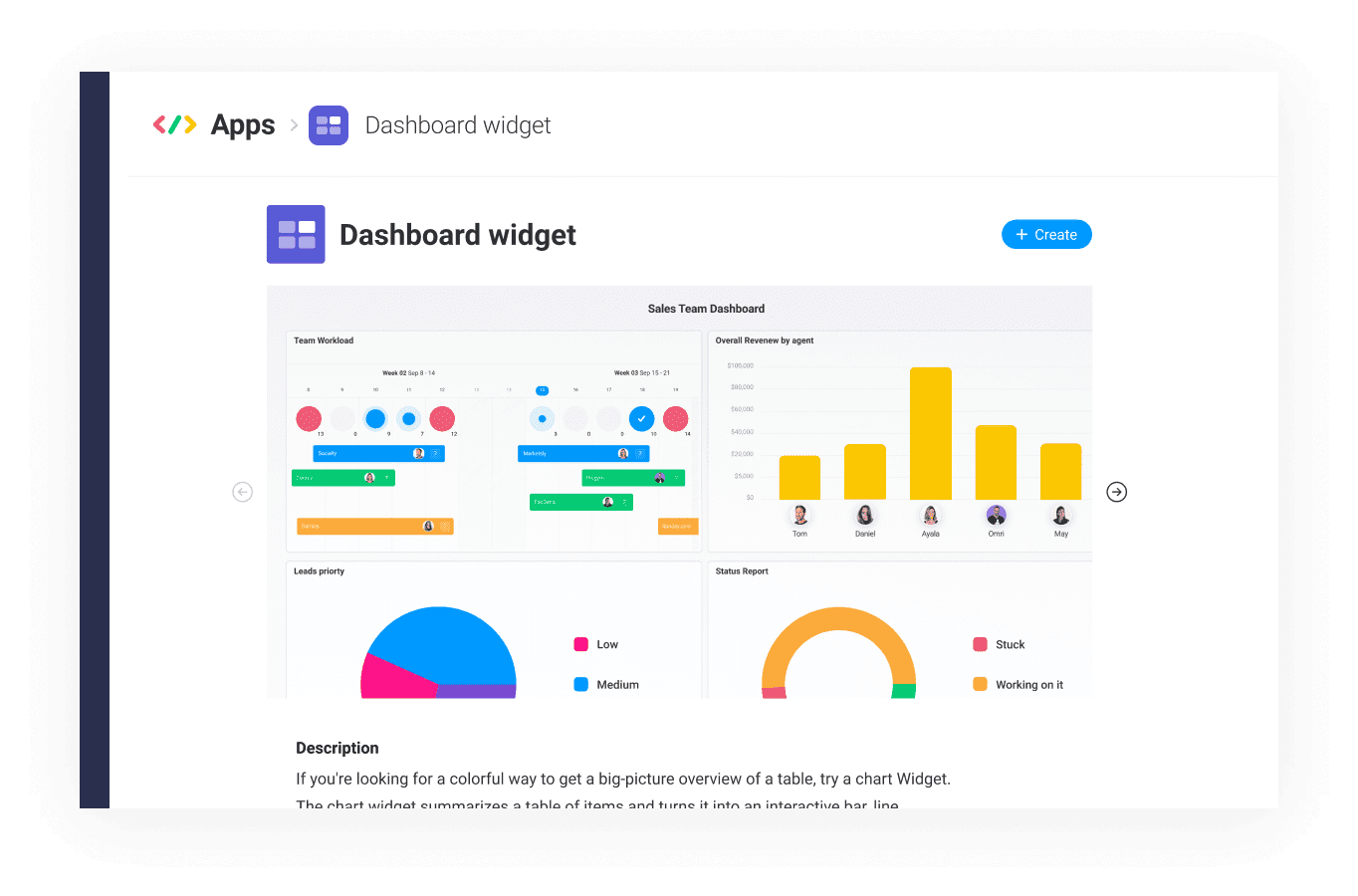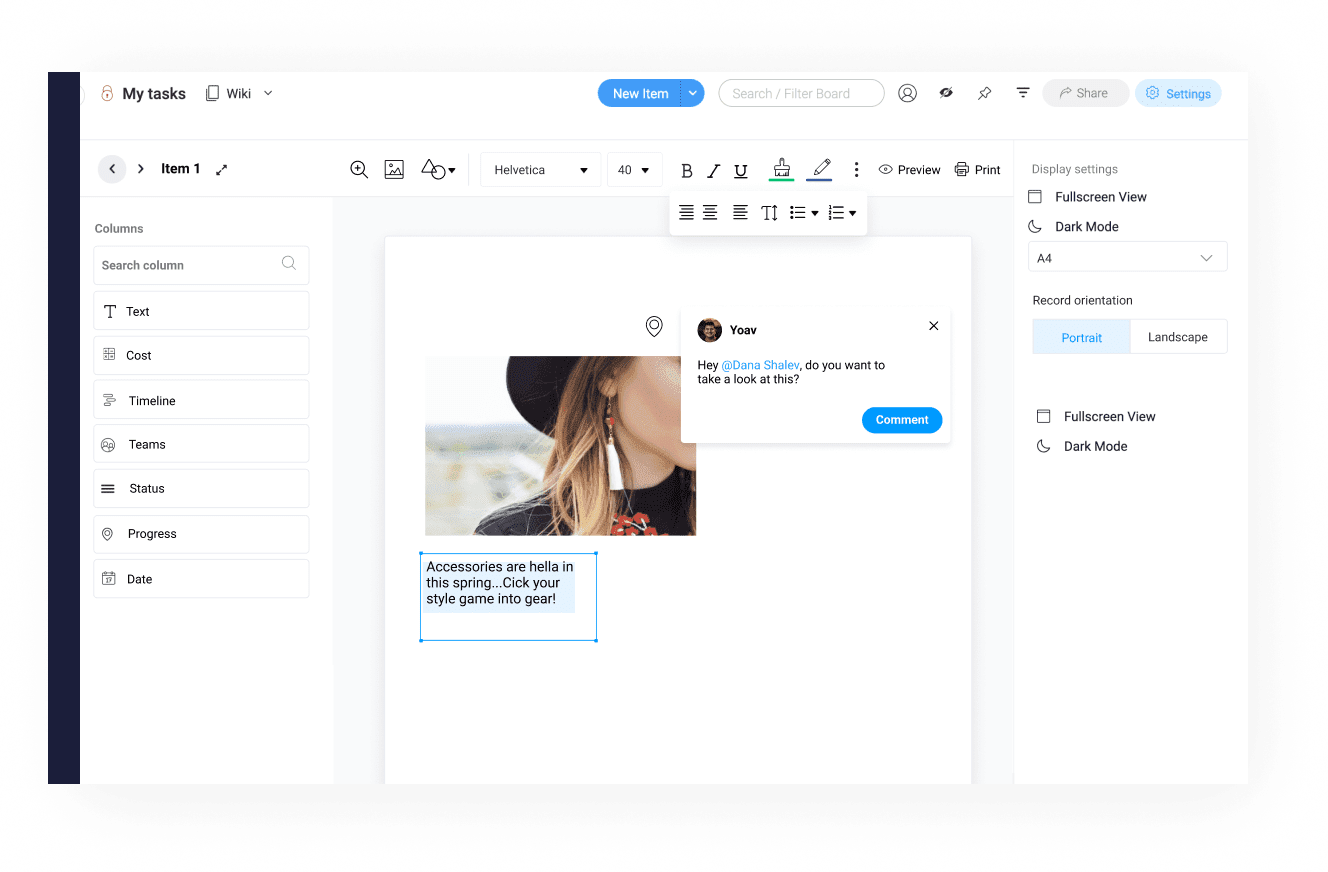When you want to add functionality to your existing workspace, you’ll likely think of hiring external developers to create custom apps from scratch or juggling between multiple apps.
But, you don’t need either of these options.
With low-code and no-code software, you can efficiently create apps that are perfectly customized to your work processes by using little to no technical knowledge.
In this article, we’ll explain what low-code and no-code software are and the key differences between the 2 solutions. We’ll also show you examples of each to highlight the best use case scenarios.
What is low-code software?
Low-code software or a low-code development platform allows users to create apps and processes while using limited code.
A low-code platform, like monday.com, lets you use minimal code to develop custom functionalities, apps, integration recipes, and more using its existing Apps Framework.

Professional developers can use a drag-and-drop interface and ready-to-use code snippets to build apps and customize them for their organization’s work processes.
What are the benefits of a low-code platform?
The key benefits of low-code application development are:
- Rapid application development: you can build new apps for multiple platforms in a few hours or days, rather than weeks or months.
- Use pre-existing tools: there’s already an existing framework and database, so you don’t have to start from scratch.
- Eliminate repetitive work: developers can avoid redundant or duplicate coding.
- Ease of use: you can build apps using simple visual tools.
- Accessibility: you’re able to access your apps anywhere, anytime.
- Scalability: you’re able to effortlessly upgrade your apps as your company grows.
- Cost-effective: faster building leads to lower costs.
- Security: low-code platforms have robust security measures to protect your data.
- No need for specialized skills: there’s no need for advanced or specialized development skills to build a particular app.
What is no-code software?
No-code software refers to a development platform that lets you build apps without writing a single line of code. Users need no technical or coding proficiency to use a no-code development platform.
On a no-code platform, users can drag and drop different visual elements to create their app. It’s similar to a WordPress theme or an online website builder.
On monday.com, you don’t have to write code to determine the look and functionalities of an app. Instead, users are given access to pre-built features that they can add to their workspace.
monday.com’s dashboards are a prime example of a no-code app. A dashboard is a blank space that can be added to a project board. You can then add a wide variety of visual widgets to a dashboard to measure any relevant project or employee metric.

So, you can build a dynamic app to track your entire work process in one glance without any code.
According to a recent survey, respondents were using low-code and no-code platforms to:
- Automate workflows
- Create new applications
- Speed up development time
- Automate data collection and reporting
- Reduce developer workload
What are the benefits of a no-code platform?
No code software has the following benefits:
- Doesn’t require any technical knowledge: anyone can build an app for their workspace with ease.
- Reduces developer workload: you reduce the burden on your company’s software developers by building your own automation recipes and apps.
- Save time and money: no-code lets you build apps faster and uses fewer resources.
- Flexibility: you can change app features to adapt to your work processes rather than the other way around.
- Accessibility: you can create apps that work on computers, Android, and iOS so that users can access them from anywhere.
- Foster creativity: your employees no longer need to rely on IT to build every new app or feature. They can test their new-app ideas by themselves.
What is the difference between a no-code and a low-code platform?
There are 3 main differences between low-code and no-code software:
1. Low-code requires technical knowledge; no-code doesn’t
While a low-code app builder also offers visual building tools, you still need technical proficiency to understand how each piece of code contributes to your custom app.
On a low-code tool, developers use the interface to drag and drop pieces of code together to create a functional app.
No-code requires no coding, so anyone can quickly adopt this software and use it to optimize their workflow.
On a no-code platform, users are choosing from existing elements to create new functionalities. monday.com’s automation rules are a great example of no-code software. Any user can automate their workflow using a simple “if this, then that” logic.
2. No-code platforms are easier for creating simple front-end apps
No-code platforms are ideal for building applications for a specific purpose within your workflow without mastering any programming language.Different teams within an organization can build different apps to help streamline their work process.
Essentially, any team member can build an automation recipe, add a board view, or create a custom dashboard for reporting on monday.com within a few minutes or hours.
The only drawback for no-code software is that it’s harder to scale since you are limited by the elements provided to you by the platform.
3. Low-code platforms let you add advanced functionalities and integrations.
While no-code software is simpler to use, low-code application development platforms are excellent for adding functionality and complex integrations.
For example, a developer can use monday.com’s Apps Framework to automate tasks and processes across multiple apps. They can build a completely new board view or create a new function.
If you think an app can benefit teams across different organizations, monday.com has an Apps Marketplace where you can submit apps for review. Once approved, the app is launched to the public.
Choosing between low-code and no-code
Both no-code and low-code development platforms are convenient and fast, but how do you decide which platform is best for you? Here’s a handy guide.
Low-code software
Low-code is the best fit when:
- You want to go beyond basic front-end apps and create a new app rather than altering existing apps’ functionalities.
- You have technical knowledge and a basic understanding of coding.
- You want to create standalone mobile and desktop apps that require integration with other systems and several data sources.
No-code software
You should choose no-code software if:
- You are building a front-end app that adds simple functionality.
- You have no technical knowledge or coding experience.
- You don’t need advanced customizations or integrations.
- You are not planning for massive scaling.
Next, we’ll look at some apps built on monday.com as examples to explain the differences.
Examples of no-code and low-code software
Let’s take a look at some different apps and capabilities within monday.com to help you further understand what no-code and low-code software look like.
Word Cloud
Word Cloud is a low-code app that adds a new board view. This view lets you see a cluster of the most important words that have been used in that project board.

You can also customize it to only show textual data from certain columns. The app is great for gaining insights via visualization.
Slack integration
Integrate monday.com and Slack with a no-code automation recipe.

This automation creates a post in a specific Slack channel any time the project board is updated. It’s a great app to keep all team members informed.
Online Docs Viewer
Online Docs Viewer was built on the monday.com Apps Framework. The low-code app lets you add a new board view to your project board.

This view lets you open external online documents within monday.com, so your team no longer needs to switch apps for writing, editing, or feedback.
Image Annotations
This low-code monday.com app lets you add comments directly onto any image on your monday.com project board.

Employees don’t need to open a separate communication tool to share feedback or suggest edits.
Forms
Forms are a no-code monday.com feature that lets you conveniently collect client, prospect, or project information conveniently and then automatically create a task or item on the relevant monday.com board.

In addition to these examples, you can check out how KPMG used our Apps Framework to build an app in 2 days and then used that app to streamline their client’s expense reporting and invoice handling processes.
monday.com enables effortless low-code and no-code development
monday.com is the perfect platform to explore both low-code and no-code development. Whether you want to add more functionality using our no-code features or build a new app using our low-code Apps Framework, the process is easy and efficient.
Explore our low-code and no-code software today and start building the app of your dreams.

